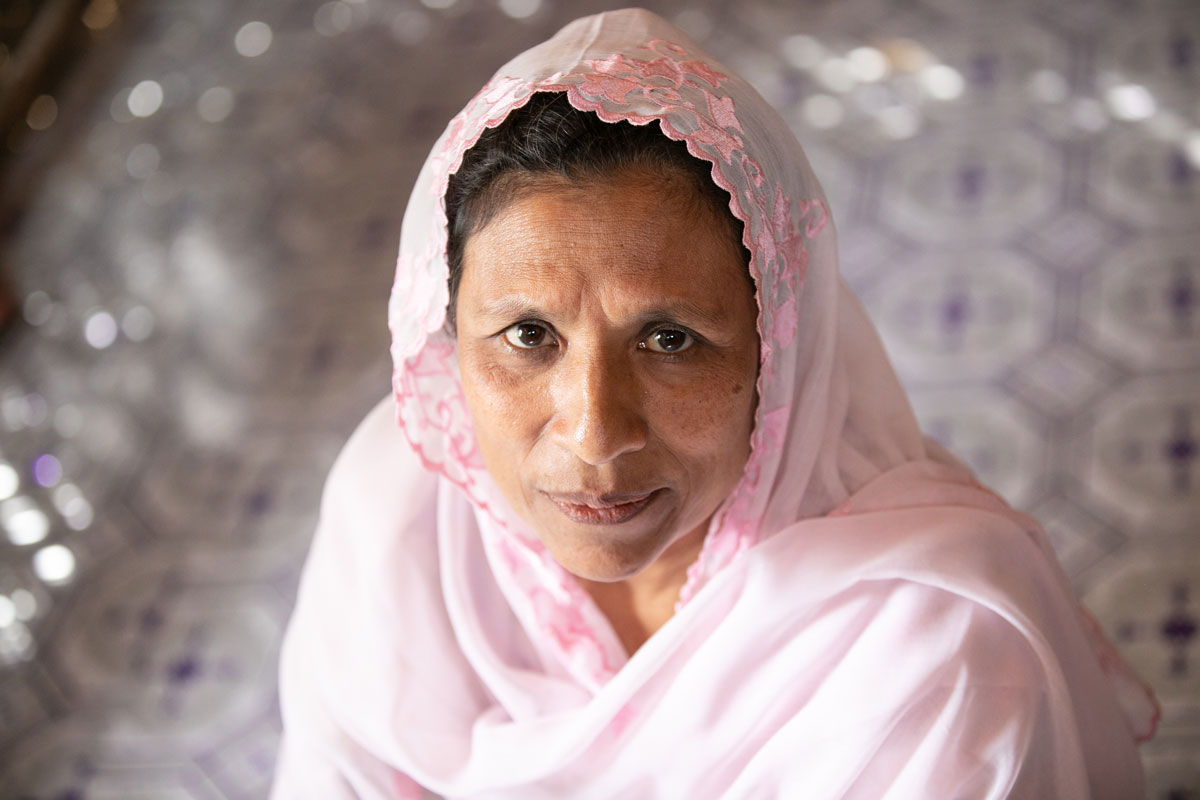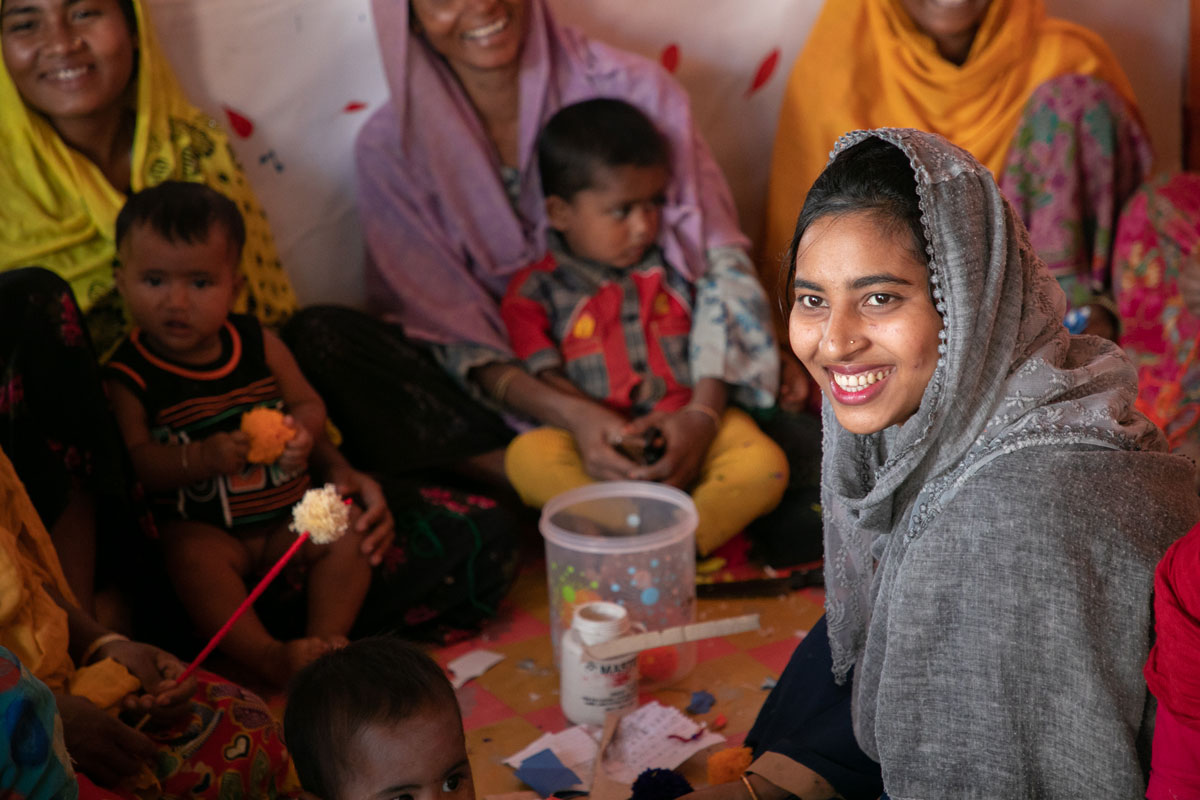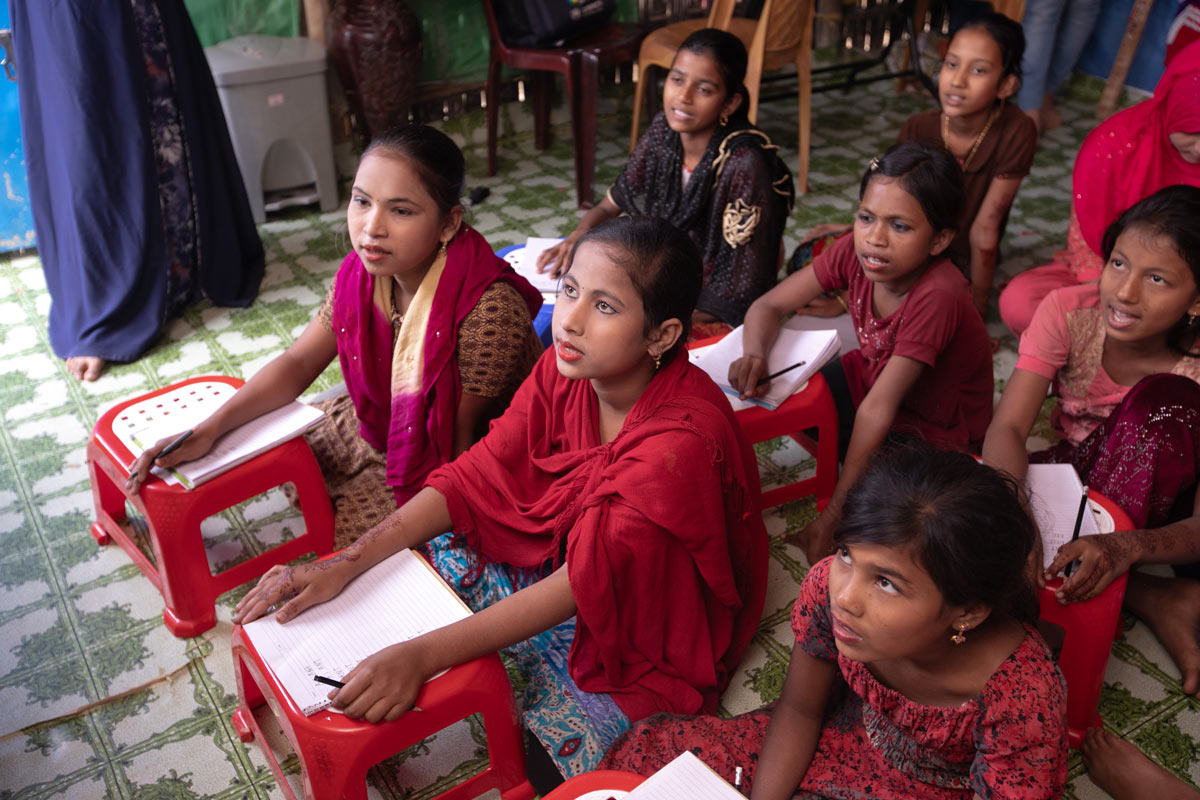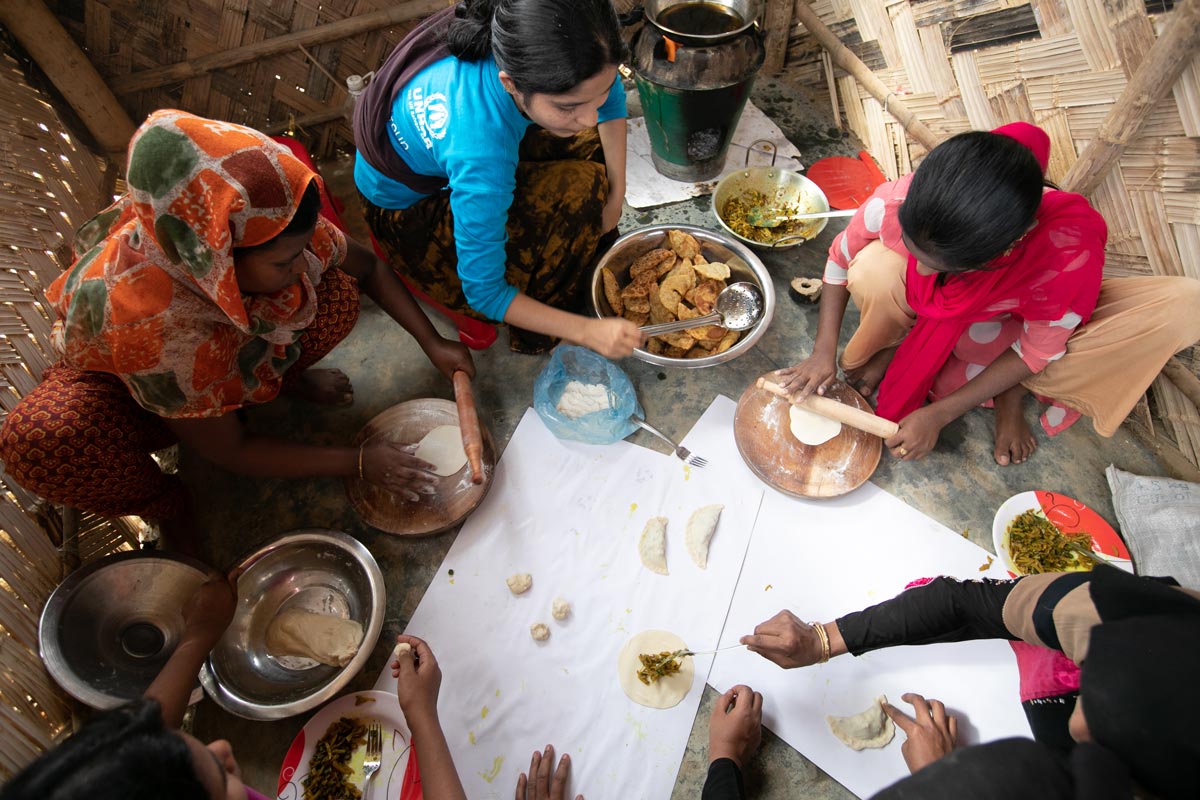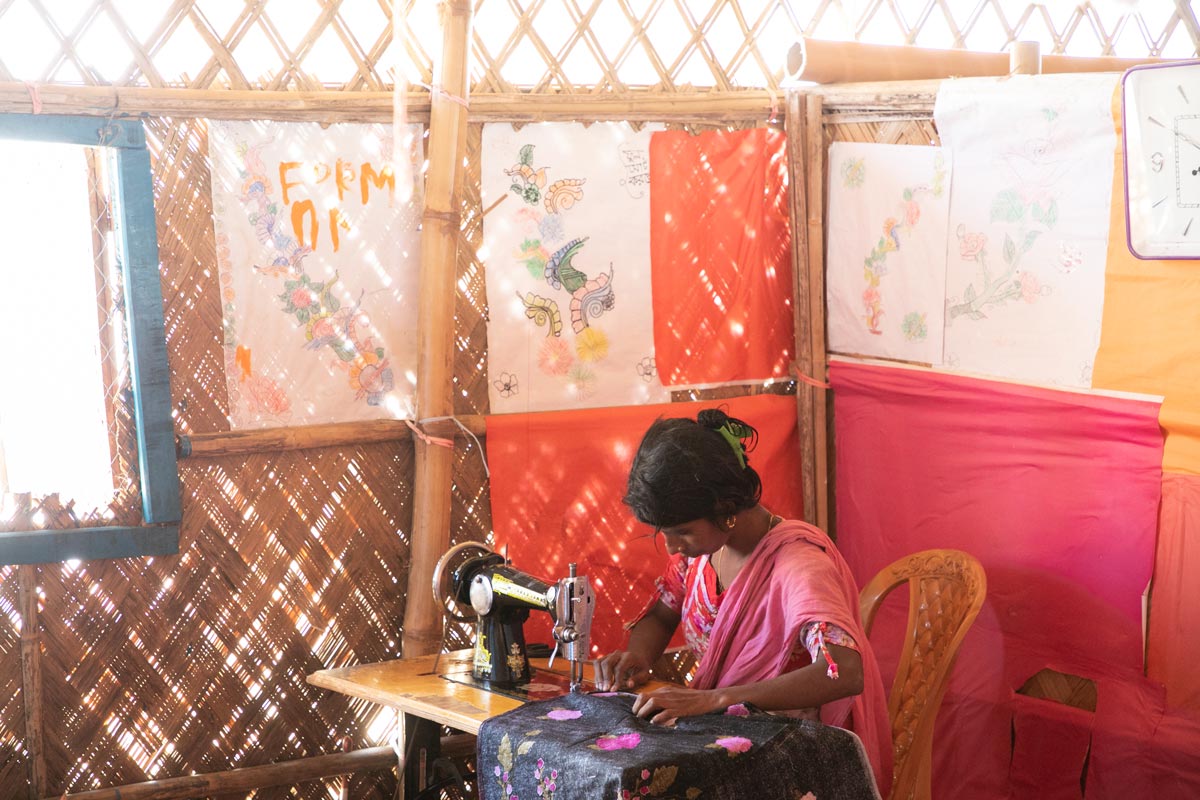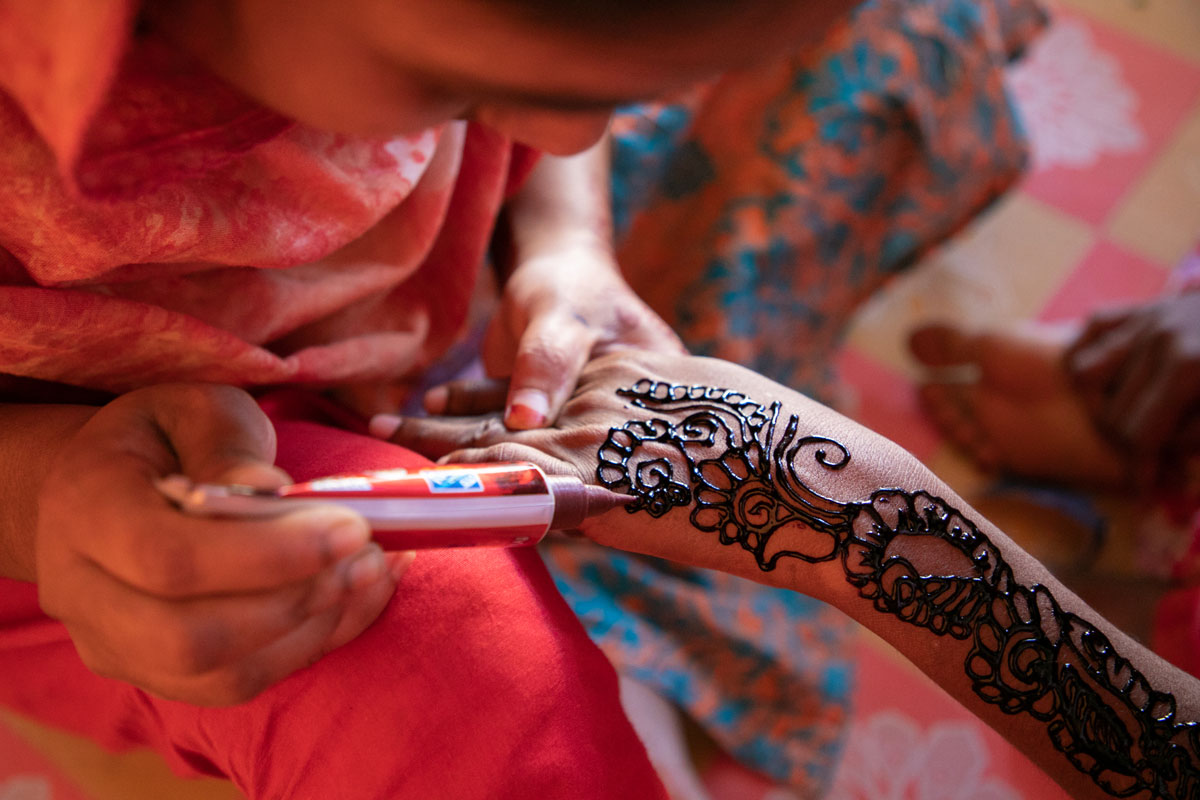She joined an estimated 700,000 Rohingya fleeing attacks on their villages for safety in neighboring Bangladesh. Of those who fled, more than half are women and girls.
The latest arrivals join thousands more Rohingya in Cox’s Bazar who fled previous eruptions of violence against them in the 1990s. Combined with the existing refugee population, nearly one million Rohingya refugees live in Bangladesh today.
These women are the focus of many stories covered by the international media. While some have bravely shared experiences with listeners, others have remained silent, far too traumatized to speak. Although safe from the violence they experienced and witnessed in Myanmar, Rohingya women and girls continue to face considerable risks and challenges in Bangladesh, including renewed gender-based violence in the camps where they sought safe haven.
Tasmin* regularly visits one of Relief International’s Women and Girl Safe Spaces in Bangladesh’s Kutupalong refugee camp, a densely populated settlement that has grown to be the largest camp in the world. At the peak of the crisis, our teams opened several safe spaces in the furthest reaches of the camp.
“As an organization that specializes in fragile settings, we had to build in these places,” says Relief International’s former emergency response team leader Ricardo Vieitez. “These are the people in the camp with the greatest needs.” With the absence of roads, refugees on the outskirts of Kutupalong face unequal access to basic assistance, including healthcare, food, and protection services, further exacerbating their vulnerability.
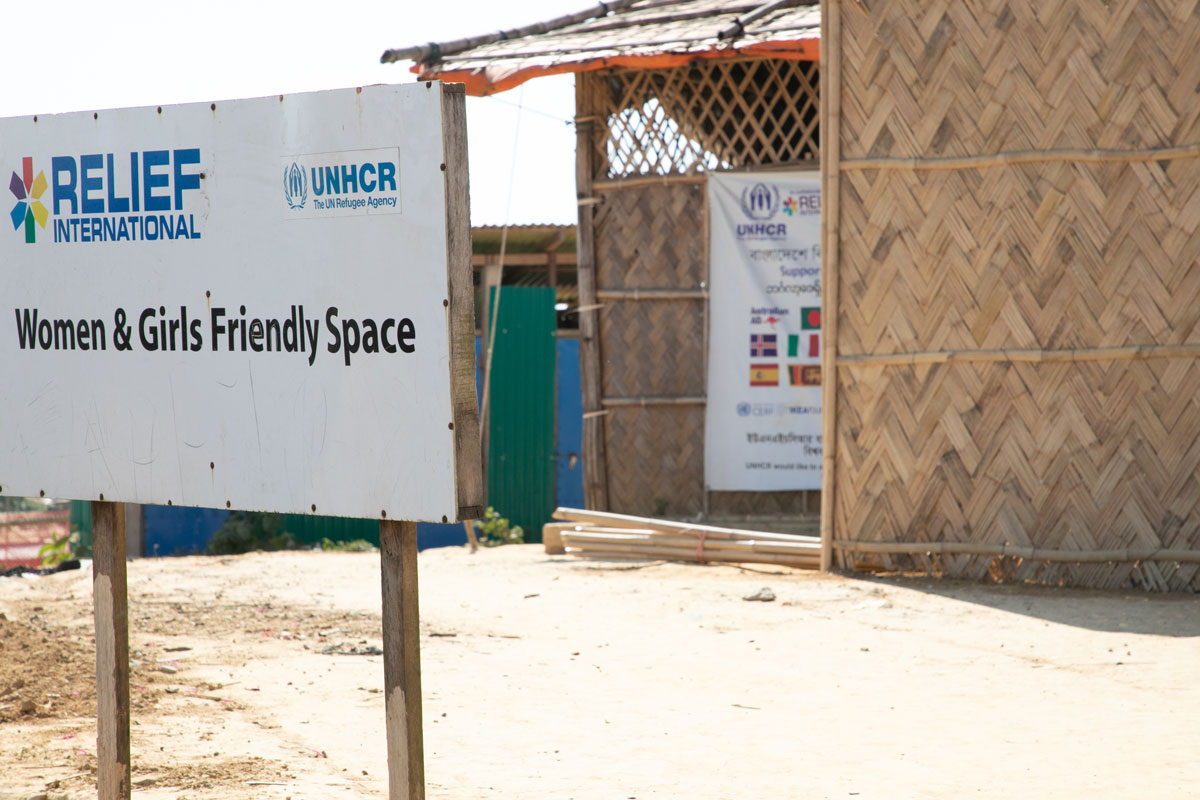
Outside one of Relief International's Women & Girls Friendly Spaces in Kutupalong refugee camp.
© Rachel Elkind/RI
The remoteness this Relief International safe space is one of its defining qualities. Removed from the bustle of camp life, our centers offer women and girls a space of their own where they can focus on healing.
“Despite the extreme trauma experienced by thousands of Rohingya women and girls in Myanmar, only a small number of refugees currently have access to specialized mental health services,” shares Nidnoi Torsound, Relief International’s Protection Manager in Cox’s Bazar.
Inside the centers’ brightly colored walls, roughly 100 women gather each day to escape the realities of life inside the camp. Here, the women sing. They pray. They make handicrafts and learn new skills, like sewing and tailoring. They practice their English and learn basic mathematics. They meet new friends and bond with older ones. They take cooking classes and share recipes. They join together in shared laughter or tears.
They also listen to one another as they share stories of trauma, gender-based violence, and journeys to safety.
Sitting cross-legged on the linoleum floor, Tasmin shares her story with the group, speaking in a soft hushed voice. “I miss my brother every single day. I can hardly wake up in the mornings the pain is so deep. When we were little, he was like a father figure to me after our dad passed away.” Tasmin shares that her brother was killed during an attack on their village in Myanmar – events that marked the beginning of the Rohingya’s mass exodus.
Tasmin and her five children escaped to the forests behind their home with the other surviving members of their village. Together, they hiked for eleven days with only the clothes on their backs, according to Tasmin’s recollection, before they reached the Naf River, which marks the border between Myanmar and Bangladesh. “That’s when I knew we were finally safe,” she shares.
Tasmin and her children quickly connected with family members in Teknaf, an underserved district in Cox’s Bazar located just a few miles to the south of main refugee camp. Yet just three months later, the cost of rent, food and healthcare had depleted the family’s limited financial resources. Tasmin’s family were resettled in Kutupalong where they joined nearly one million other Rohingya, many of whom have been displaced two or three times in their lifetime.
In many ways, Tasmin is typical of the women who seek out services at Relief International centers. The violence Tasmin witnessed as she fled her village in Myanmar has had a devastating effect on her mental health. Others have experienced physical violence, rape, and heart-wrenching loss as they escaped their villages in Myanmar for safety in neighboring Bangladesh.
At this time, Tasmin chooses to keep her story brief, omitting some of the traumatic details from her past. Three years later, time has helped to heal some of these wounds. On a final note, Tasmin turns to the group and says, “I feel lighter now.”
Life is dire in the camp
While women report feeling safer inside the camp than they did in Myanmar, the loss of all of their material possessions, source of income and loved ones, has taken a dramatic toll on their psychological well-being.
“In the immediate aftermath of the Rohingya refugee crisis, we heard many stories shared by women at our centers about the events that forced them to flee. Three years into the crisis, their fears are less-focused on the trauma they endured in Myanmar. Now, they’re worried about how they will survive here in the camp,” shares Nidnoi.
Many refugees remain traumatized by what they have experienced, which are further compounded by the daily realities of life in the world’s largest refugee camp, which include limited food rations, a lack of opportunities for earning a living, and threats against their personal safety. For women and girls, new restrictions on their freedom of movement further exacerbate their vulnerability inside the camp. Many women are unable to leave their shelters for extended periods of time, or at all, to seek out professional help. Others live in shelters located miles from the nearest center.
The lack of options available to these home-bound women outside of Relief International’s Women & Girls Friendly Spaces prevents them from accessing support networks inside the camp, further isolating them in what is already a difficult situation.
“Kutupalong is the world’s largest refugee camp, which can make it extremely difficult for refugees in remote areas of the camp to access our centers. This is why we’ve established mobile teams to send select services to Rohingya women and girls in their homes,” shares Nidnoi. “Our counsellors are able to deliver psychological first aid to people in their homes, the one place in the camp where they may feel safest.”
As the crisis enters its third year, the fate and future of hundreds of thousands of Rohingya refugees remain in limbo, prompting further psychological issues about when, or if, they will return home to Myanmar.
*Name changed to protect identity.
